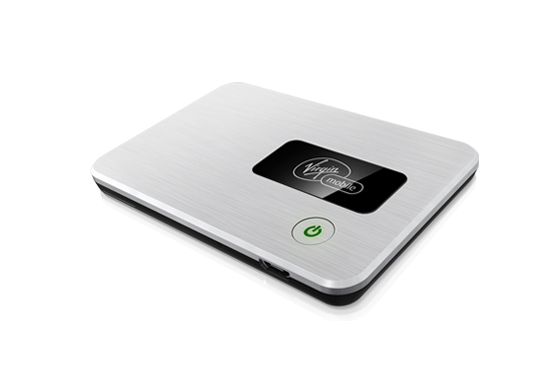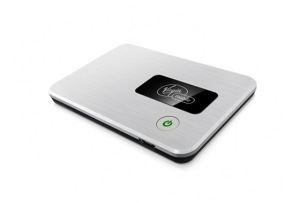I was recently traveling in the USA, and as you might expect, I was in need of a mobile internet service. Upon looking around at the various options available, I opted to buy the Virgin Mobile USA MiFi 2200. This is a device whose description certainly seems to fulfill the needs that I had. In practice, that is simply not the case; this would have to be one of the worst pieces of alleged technology that I’ve ever had the displeasure to have used. Please note carefully that this is a device that is available in the USA, marketed and supplied by Virgin Mobile USA.
But please, let me take you through the whole painful story, so you can fully understand just how bad this experience was.
First of all, you need to buy and activate the device. No problem, you say? Let’s just see about that.
In the past I’ve been very critical of the activation processes that local telcos use: they use off-shore call centres, whose staff fail to understand the Australian dialect. The time that you wait on hold for these call centres is disrespectful, and when questioned, the call centre staff say it’s because they’re “very busy”. Well, no. It’s actually because the local telcos are too bloody cheap to put on enough staff to handle the volume of calls being taken. And of course, you may often be placed into their permahold queue, where you might be entertained by their lousy choice of crap music. But once connected to a warm body in the call centre, the whole process of activation will usually just take a few minutes.
The Virgin Mobile USA experience is somewhat different, conducted fully on-line, is inordinately complex, is very slow – it took me over a half hour to activate one device, and I had two that needed activation – illogical and poorly designed. You need to do this using the actual device that you are activating, and of course that requires the device to be turned on, which in turn requires that it have a charged battery. Right out of the box?
Yeah, right, like that’s going to happen!
The process offers a series of screens, wizard style, asking a series of not too unreasonable questions, and then tries to connect you to the Virgin servers after the device reboots itself. If the whole process has worked, then you can log in to your account and then add funds to your account. And then take those funds and allocate them to your device.
As I said, IF the whole process worked properly, first time. I had two devices to activate, and the process failed in both instances.
Hey, Virgin Mobile USA, I have far better things to do with my time than waste it trying to use your stupid bloody poorly designed system; spend some time and fix the design; the current one sucks big time. It’s stupid, it’s illogical, and to be perfectly honest, I’m surprised that it works at all, such is how bad the whole system seems to be.
And that’s just the supporting stuff that you need to to before you can begin surfing the web.
Let’s presume that you’ve managed to navigate through their activation system, the device has been successfully activated (but for how long? – more on that in a moment), and so now you can finally get to surf the web.
Provided your device has a charge. A charger is provided, and should be used; I found that using other chargers, or trying to charge the MiFi 2200 from, say, the USB port on a laptop computer failed to charge the device. I was also unable to charge it using a USB adapter in a car, although the same laptop computer and in-car charging adapters successfully charged several other devices on the trip. Clearly, there seems to be something amiss within the MiFi 2200.
And it gets worse: while it’s connected to a charging device (and regardless of whether it’s actually being charged) it insists upon turning itself on. Hold the power switch down to turn it off? Yep; it powers down. And then powers itself back up. Regardless of whether or not I actually wanted it on at that time.
Of course, there are times when you’re out and about and when you might want the device powered down. Like, when on a plane, flying from, say, here to there. Powering the MiFi 2200 down proved to be a real challenge: one of the devices required powering down through the use of the power button two or three times before it finally decided to power down and stay powered down. The second device was even more stubborn, and the only way to keep it powered down was by opening the case and removing its battery. This is hardly a user friendly process!
Finally, and as I alluded to earlier, the MiFi 2200 seemed to regularly forget that it had been activated. Several times through our time with these units, they reported that they were not activated, and we needed to take some steps to go, again, through parts of the activation process.
And in fact, this seems as if it may be a very common fault: over the weekend I received an unsolicited email from Virgin Mobile USA describing exactly this reactivation process. This seemed to be a bulk email sent to all of their registered MiFi Users. Hey, guys, rather than tell us how to get back on to the system (which is really useful information) don’t you think it’d be a better idea to fix the damn system in the first place? Then the problem just goiews away, you know?
The bottom line here is that this is a piece of technological crap. You might see it in the various stores or online for between US$99 and US$130, and then you still need to buy some bandwidth access – it comes with none! Regardless of the cost, I would strongly urge you to look elsewhere for your WiFi Hotspot needs. Based upon my experience, you will be wasting your money.

